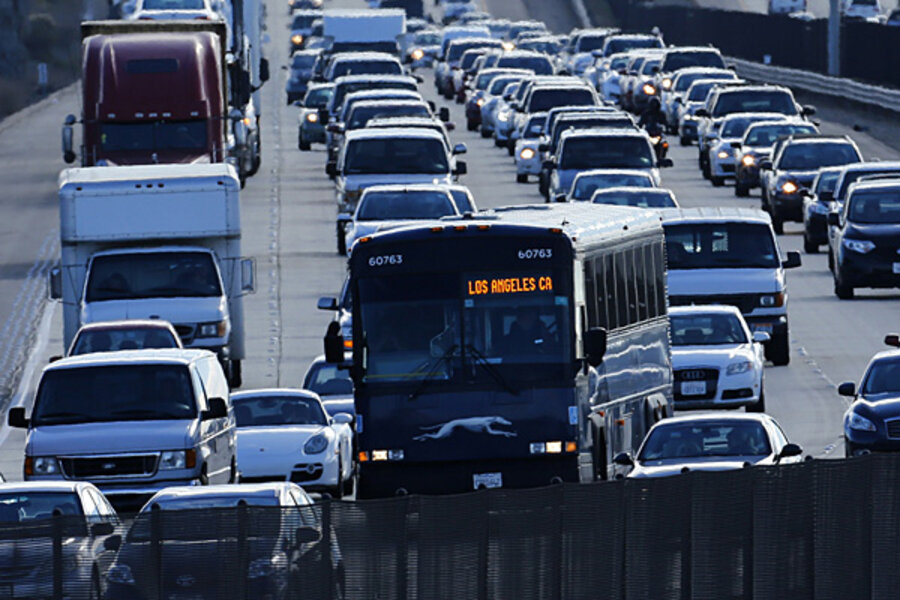Time to park the commuter tax subsidy
Loading...
Am I the only one who thinks today’s commuter tax subsidies are nuts?
The issue is in the headlines because on January 1, thanks to yet another dose of congressional inaction, the amount of pre-tax dollars mass transit commuters can put aside fell from a maximum of $240 a month to $130. At the same time, people who drive to work got boost from $245 to $250 (don’t ask).
Mass transit supporters, not surprisingly, are furious. But the whole flap makes me want to ask: What’s the point of this crazy subsidy?
It can’t be to encourage energy efficiency, cut pollution, or reduce dependence on imported oil. Using tax dollars to encourage people to drive to work has the opposite effect. And even if the transit tax break is restored to its higher level, the incentive would be roughly the same whether you drive or take the bus. So it is unlikely to change behavior very much at all.
In effect, we are merely giving people a tax break to go to work. Well, some people anyway. If you are an independent contractor or work for a firm that doesn’t offer this benefit, you get squadoosh. Same if you bike or walk to work. And the less money you make, the less of a windfall you get.
As it stands, the program lards one more subsidy on top of all the other benefits we give drivers. It adds another cost to what society already pays for long commutes in gas guzzling cars–such as pollution and wear and tear on roads and bridges. And don’t tell me about the gas tax. In 2014, the Highway Trust Fund will be solvent only because of a $14 billion transfusion of general revenues, according to the Congressional Budget Office.
But we not only give outsized benefits to drivers, we give them to the richest motorists in the most expensive cities. A top-bracket lawyer can pull his BMW 760Li into the office lot, pay the monthly parking max of $250, and reduce his costs by about $100 (what the heck, it pays for a round of golf at the club).
Note that the average cost of monthly parking in the U.S. is only about $165 so unless your commuting in a city such as New York, Boston, or San Francisco, you’ll never hit the $250 cap.
But the transit piece may not be much of a bargain either. A woman who cleans that lawyer’s office would save a monthly maximum of $13 under the current schedule—if she’s lucky enough to make it into the 10 percent tax bracket. Even if Congress raises the maximum pre-tax limit to $245 or $250, it wouldn’t do her much good since she’s unlikely to spend that much each month. A typical commuter bus ride in the U.S. is about $2.
Then there is the question of whether this incentive changes behavior in any significant way. Would that bus rider, who may not even own a car, change her mode of transportation without the incentive? Not likely. Better to ditch the subsidy and give her a bit more cash though a more generous Earned Income Credit.
And Beemer guy? He’ll happily pocket the $100 bucks, but would he stop driving without it?
Perversely, even if the subsidies do change behavior on the margin, they may do so in exactly the wrong way by encouraging people to live in more distant suburbs. This is even true for those who take public transit which, in many cities, charges more for longer trips.
There is a good chance the transit subsidy will be restored sometime in the next few months, along with 55 other expiring tax provisions. That will equalize the give-away for those who ride mass transit and those who drive—an improvement over the situation on New Year’s Day. But the whole thing still seems pretty stupid.







